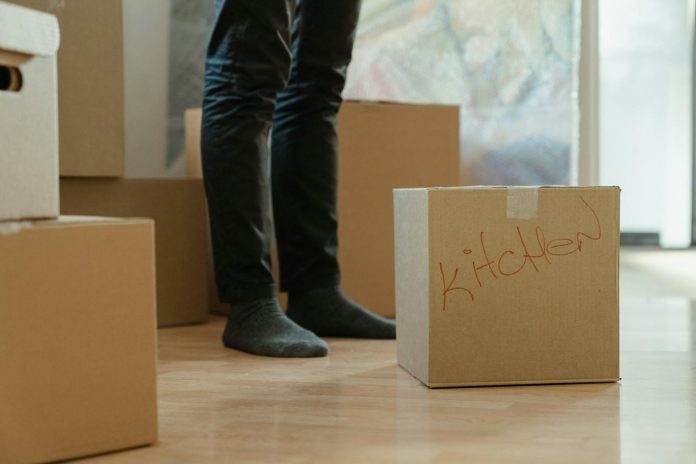British homeowners face a distinct challenge: downsizing possessions in homes that are often smaller than those in many other European countries. With limited property sizes, efficient storage solutions become a necessity rather than a luxury. The ongoing reduction in available living space makes finding new ways to keep homes tidy and comfortable more important each year.
Hidden storage addresses this issue by making use of overlooked areas and integrating adaptable furniture. Through simple adjustments, homes can remain organised and visually appealing without sacrificing important items. Every property, from a Victorian terrace to a new-build flat, hides space that can support both storage and style.
Effective solutions fit naturally into the home’s original architecture. Spaces like alcoves, corners, and recesses can become practical storage points that don’t upset the look or spaciousness of a room. This approach lets homeowners maintain order and optimise liveable space, even in the most compact properties.
Space-Saving Challenges in British Homes
British homes are famously compact. Many UK homes are smaller than the European average, which creates unique storage challenges for British homeowners and renters alike.
Terraced houses, while charming with their period features, often suffer from narrow hallways and awkward room layouts. Modern flats maximise living space but frequently lack built-in storage options. New builds, despite their contemporary designs, typically offer smaller footprints than older properties.
The architectural quirks of British housing present distinctive storage limitations. Victorian and Edwardian homes feature chimney breasts that create alcoves, while 1930s properties often have unusual nooks and crannies. Resources for finding professional storage solutions can be found at Shurgard Self Storage if space constraints become overwhelming.
Regional differences add to these challenges. London homes are often more compact, while northern cities offer slightly more generous proportions. This difference affects how residents approach storage solutions based on their location.
Living with clutter in small spaces can impact daily comfort and make it harder to keep things organised, especially in homes with limited room. Many people find that creating hidden storage solutions—such as transforming under-stair cupboards or attic eaves—can make it easier to access belongings and maintain a more relaxed, tidy home environment.
Transforming Furniture into Hidden Storage
Ottoman beds provide a practical storage solution because their entire under-mattress area is accessible, allowing homeowners to use almost all available space for storing seasonal clothing, spare bedding, or items that are rarely needed. The gas-lift mechanism makes it easy to raise the mattress with minimal effort, meaning access to stored items does not require lifting heavy panels or shifting bedding.
When choosing an ottoman bed, checking the lift mechanism’s load capacity ensures smooth operation even when the compartment is full. Before installation, measure the bedroom’s floor space to confirm the bed can open fully without hitting walls or furniture. It’s also important to ensure the floor beneath can handle the additional weight, especially in Victorian or Georgian homes with original floorboards. For homes with tighter budgets, assembling a flat-pack model with clear instructions provides a cost-effective and manageable way to introduce a great deal of hidden storage without specialist tools.
Coffee tables with concealed compartments provide convenient storage in living areas. Models with lift-up tops or sliding sections allow quick access to remote controls, magazines, and other everyday items while maintaining a tidy appearance. Many British retailers offer coffee tables specifically designed for smaller living rooms.
Hollow bench seating works brilliantly in entryways and bay windows, areas often underutilised in British homes. These pieces provide both seating and storage for shoes, bags, or children’s toys. In period properties with bay windows, custom-built window seats can incorporate plenty of storage space.
When selecting storage furniture for older British properties, weight considerations are important. Victorian and Georgian homes may have original wooden floors with limited load-bearing capacity. Distributing heavier storage pieces across joists rather than concentrating weight in one area helps prevent structural issues.
Making Use of Dead Space in British Home Layouts
Under-stair areas hold major potential for hidden storage in British homes. Rather than major structural changes, practical solutions include custom-fit pull-out drawers or shelves within the existing cupboard space. Homeowners can start with assessing the height, width, and depth under the stairs to determine what kinds of items will fit best. Deep drawers work for shoes and boots, while slimmer trays are ideal for smaller accessories.
Installing storage units with ball bearing runners or sturdy hinges ensures smooth operation and durability, especially with regular use. When considering alterations to areas under the stairs, it is essential to check whether planning permission or compliance with UK building regulations is required, since removing or modifying structural elements (such as load-bearing walls or stair supports) can affect the building’s safety. Engaging a professional joiner or carpenter will help determine what is feasible and safe for each specific property.
Storage installed under the stairs should not restrict the escape route in case of fire, and should allow easy access for cleaning or retrieval of stored items. Looking at real-life examples, such as British homes featured in national housing magazines, shows that even adding modular storage shelves or ready-made under-stair drawers can significantly increase the usable space without complex renovation work or violating safety requirements.
Chimney alcoves, common in period British homes, can be modified with custom shelving or cabinets. These recessed areas provide natural nooks for storage without protruding into the room. Floating shelves maintain the architectural character while adding functional storage.
Bay window seats represent another opportunity for hidden storage. Custom-built seating with hinged tops or front-facing drawers turns these architectural features into practical storage spaces. The space beneath can house anything from books to board games.
Loft spaces in Victorian and Edwardian homes often have awkward angles due to roof pitches. Custom storage units that follow these angles can turn otherwise unused space into useful storage. Pull-out drawers built into eaves provide accessibility while working with architectural limitations.
Narrow hallways, typical in British terraced houses, benefit from slim console tables with hidden storage compartments. These pieces provide a surface for keys and mail while concealing shoes, bags, or household items within.
Victorian and Georgian Home Specific Solutions
Working with original features requires careful planning to maintain character while adding storage. In Victorian and Georgian homes, keeping decorative cornicing, ceiling roses, and dado rails while incorporating storage solutions supports the property’s historical appearance.
Adapting fireplaces for concealed storage works particularly well in homes where fireplaces are no longer functional. Custom cabinets can be built into the hearth area, with doors designed to blend with surrounding decor. This approach maintains the visual focal point while adding practical storage.
Period properties often feature higher ceilings than modern homes. This height advantage allows for taller storage units or even mezzanine platforms in some rooms. Victorian homes with servant bells or speaking tubes can include these features in modern storage arrangements, preserving historical elements while adding function. Small-Scale Hidden Storage for Everyday Items
Creative methods for hiding technology and cables help maintain a tidy appearance. Cable management boxes disguised as books, charging stations hidden in drawer units, and TV remotes tucked away in coffee table compartments reduce visual clutter in living spaces.
Households often find that setting practical rules about where particular items should be placed – such as always keeping remote controls in a specific box or returning shoes to a designated bench compartment – means these hidden spots stay tidy rather than becoming a catch-all for miscellaneous clutter. Many families who use these organisation habits find they spend less time searching for misplaced things and often enjoy faster decluttering routines, showing that good organisation is just as important as the storage system itself.

















